I’m not really looking forward to 2024. We seem to be in as divisive and angry a time as I can ever recall, and I think it’s inevitable that the tenor of discourse is only going to grow greater and louder and more aggrieved as we head into the election year. Already, social media is just about useless, reduced to a place where people scream at one another discordantly. Now, this is nothing new, but it’s steadily been getting worse, and I don’t see any signs of it abating or calming down. The destruction of information media and the dumbing down of the citizenry has eroded the very bedrock of civility, and the ability to use deflection judo has reduced all arguments down to, “I know you are, but what am I?” It’s discouraging.
So let’s maybe start off with something lighter this time. Remember a week or two back when I was asked about there being any bit of merchandise or paraphernalia from my time at Marvel that was noteworthy, and I spoke about a Thing note-holder that was created and given out only to the licensing staff? I couldn’t find an image of the piece then—but I have in the intervening weeks. And I could have just cropped the essential portion of the image, but it turns out that the Thing here shares the screen with a young Dan Slott, from when he was on staff in Marvel’s art return department back in 1991. And how could I deprive you of that?
All right, let’s see if we can all have a little bit of discourse that clears the bar for a minimum amount of civility again this week.
Chris Sutcliffe
I'm curious how much thought, if any, goes into the time of year that certain types of comics get released. For example, in the world of movies, you have blockbusters in the summer and Oscar contenders in the winter, and movies you want to bury in February.
Are there similar rules for comics? Do the releases of events, or giant-sized issues, or new number ones, tend to fall on specific times of the year?
There are some, Chris, though I can’t say that I’m really convinced that they do a whole lot to affect sales. But, for example, there’s a tendency to want to launch titles that have some manner of a spooky bent to them in October due to Halloween, and a similar pull towards putting forward projects featuring black characters in February for Black History Month. There’s also an overall sense of how the ebb and flow of the marketplace works. January is typically a down time for comic book sales, whereas the spring and summer tend to be stronger—which is why big Event storylines most often get placed in that block of time. Also, four times a year we get a month that holds five Wednesdays rather than four, and those months tend to be heavier with releases such as one-shots and limited series, so as to be able to cover that additional week’s worth of titles.
Zach Rabiroff
I have a historical question this week. Late in 1969, Marvel abruptly announced (presumably at the instigation of publisher Martin Goodman) that they would henceforth put an end to continued stories in favor of one-and-done adventures. The policy forced multiple plots in progress to hastily and awkwardly wrap things up, and caused enough of an outcry from fans that two months later, the Bullpen Bulletins was already doing an apologetic backpedal.
Now, this came at a moment of visceral panic in the comics industry, as newsstand sales rapidly dropped toward the end of the decade, and this may have been as simple as a hail-Mary attempt to capture casual readers. But do you have any more inside info on what precisely motivated this move, and what allowed for its very swift reversal?
It’s probably difficult to imagine this from the vantage point of today, Zach, when most everything is available through comic book specialty stores. But back in 1969, the distribution of Marvel books was still pretty spotty. Even in venues that carried other comics, Marvels could be scarce. As an example, I have a friend whose first issue of TALES OF SUSPENSE was #97. Shortly thereafter, he came upon CAPTAIN AMERICA #100 and then TALES OF SUSPENSE #96, all within the space of a couple of weeks. So things were still dicey in terms of being able to find even two consecutive issues at a particular outlet. This led to a lot of complaints from a certain segment of the audience, who felt cheated that they were buying stories for which they might never see the climax. And it was a loud enough outcry that eventually, Martin Goodman—who I believe felt the same way, that continued stories were bad for business—ordered a stop put to the practice. This didn’t last long, both because of complaints the writers and more seriously, a different segment of the audience. But it was a legitimate thing. Only recently, Mark Waid recounted how picking up an issue of X-MEN that was continued when he was a young boy kept him from buying another Marvel comic for three years or so, his thinking being that he could get three complete stories in an issue of SUPERMAN’S PAL, JIMMY OLSEN for that same twelve cents.
JV
In the Busiek/Avengers trade you publish an outline from Busiek with a really cool concept for a modern take on Zodiac where known Marvel villains assume the title of each Zodiac sign (Fenris is Gemini, etc)..that I can see was seeded a bit but then abandoned - any reason why? such a cool concept IMO.
We just didn’t get to it, JV. It was also always going to be a tough thing to pull off, as it would have required access to villains from other editorial offices who wouldn’t have cared much about our plans and would have had their own for those villains. There were a couple of different ideas that Kurt had back during that run that we didn’t get to, that isn’t an uncommon thing, really.
Murewa Ayodele
I strongly believe anime plays a huge factor in the popularity of manga like I think the animated shows of Batman, X-Men, and Transformers played a role in the 90s boom.
I also think the Walking Dead and Invincible shows caused a bigger boom on their comic inspirations than comics with movie adaptations or video game adaptations.
I no longer have access to Disney XD or know if it still exists or not, but I remember it used to feature amazing Marvel animated series like Ultimate Spider-Man and Avengers Assemble. My question here is, did this animated shows ever help bring new readers to their counterpart comic titles at the time?
Secondly, do you think Marvel Unlimited will ever have a tier of subscription that’ll be free so younger readers (who usually have little money and are not autonomous enough to visit a shop) can read some select comics for free… a way Marvel Unlimited can get that Webtoons penetration of new markets?
I’m sure that there was some degree of readers moving from the animated Marvel shows to the comics, Murewa, but I don’t know to what extent, really. It’s a fairly difficult thing to track, and it’s typically not as direct as sees animation, seeks out comic book shop. But it isn’t zero. In terms of MARVEL UNLIMITED, we do free releases and promotional releases from time to time, but as it’s a subscription service, it’s a bit tricky to do exactly what you’re talking about here. And I’m not really plugged into the planning or operation of that service to be able to give you good feedback for what we may have tried or intend to try in the future, nor the hierarchy of needs.
Brandon Schatz
I just got in some comics and graphic novels, and included in the batch were the run of 1-11 of the Ultimate Marvel Magazine. These originally hit when I was in high school with the Marvel Knights magazine, and they were definitely a gateway for someone who didn't have a local shop into a new world of stories.
My question is, do you know anything around why these were made and how? I don't think you had a direct hand in either, but any insight would be appreciated.
They were made just like any other comic book, Brandon, by putting them together and distributing them. But they were specifically designed as an outreach tool beyond the Direct Market to where they might reach readers like yourself who didn’t have a local comic shop but who might get on board the Marvel train. They were proposed by Bill Jemas and Joe Quesada, and as such they tended to lean heavily on the material that Bill liked best. And one of the folks involved in putting them together is today one of the hosts of the Dollar Bin Bandits podcast, on which I’ve appeared in the past and will again shortly.
Kevin
So my friend is a comics creator who has released two graphic novels (which were well received critically with the first being Eisner nominated). He's currently working on his third which is going to be published by a noteworthy comics publisher. He has produced ashcan copies of the first chapter of the new GN, and I think it holds together really well as a single issue and as proof that he can put together something which is closer in format to a traditional monthly comic. a) Do you think sending editors this 1st issue of the new graphic novel would be more likely to get an editor's attention then say sending them the full GNs that have been previously published? b) Do you think a physical copy of the issue being mailed to editors would be more likely to be read than sending a digital copy via email would be?
As with all things, I think it depends on the editor and how much they have on their plate, Kevin. Speaking for myself, I think I’d be more likely to give that 1st issue a look more readily than the full graphic novel simply because it would take less time. Other editors, I’m sure, would prefer to see the full work. And for me, I’d just as soon get it digitally rather than physically. Again, others may have a different feeling on this. So it’s probably best to inquire before you send—let each editor tell you their preference before you send something that goes to waste. Good luck to your friend!
The Carlos
Why don't editors usually have their own booths at comic conventions? One time I was lucky enough to bump into Nick Lowe at a convention and I got him to sign an issue of Amazing Spider-Man, and since then I've wondered about that. Probably too many people would ask you for jobs, huh?
Well, the short answer, Carlos, is that nobody cares about the editors, nor should they. Which is maybe a funny thing to say from this Newsletter, but there you go. Beyond that, when we’re at a convention, whether we’ve been specifically sent by Marvel or not, we’re representatives of the company, and so it makes sense to confine our booth activities to whatever presence Marvel has.
Jeff Ryan
Let’s say an idea for a great X-Men story hits you: hopefully this is happening! I’m assuming writer/artist Tom Brevoort doesn’t come out of retirement, tanned, rested and ready. How challenging is it as an editor to accept that the assigned creative team’s version of “your” idea won’t 100% align with what popped into your head?
For me, it’s not all that challenging at all, Jeff, because I understand and accept the compact between editors and creators. It isn’t my job to write the books, that’s what writers are hired for. If I want to, I can force certain developments, demand certain storylines, and as long as I’m in charge of the characters involved, they will likely come about. But that isn’t a great way to run a railroad. You want creative people to have an investment in what they’re doing and not just to be some editor’s sock puppet monkey telling the stories that the editor wants to tell. By that same token, I freely throw out a lot of ideas to my creators, occasionally even one that’s good. And they’re free to take and use anything that I throw out—that’s the entire reason I do so. So there are things that you can look at to see that difference in play: in the first IMMORTAL HULK hardcover, I believe we printed by original write-up of thoughts as to what I was hoping to see from a new Hulk series, and you can see exactly what Al Ewing springboarded off of and what he left behind gathering dust. It works like that, or should.
Kevin Hines
Love that list of secret Santa comics. What comic has been gifted to you (since you started working at Marvel) that excited you the most. One that you hadn’t read but now you consider it a favorite?
If I’m honest, Kevin, I don’t know that I have an answer for this. Because I’ve been gifted some very fine material during these exchanges, but I’m well-read enough just as a general consumer that I’m notoriously difficult for the rest of the staff to buy things for. And that means that I tend to receive works that are further from the center. And I enjoy reading them all, but I don’t know that any of them necessarily introduced me to creators or series about which I was unaware and which became favorites going forward. That’s the hope with these Secret Santa events, but I’m a more difficult nut to crack. So maybe the closest thing was years ago, when my then-Associate Editor Lauren Sankovitch gave me a copy of Al Ewing’s 2000 AD strip ZOMBO. We were already working with Al a little bit at that point—Kieron Gillen had introduced Lauren to him during a trip to the UK—but it game me more exposure to his work and his thought process.
Alan D
Do you have a favorite Marvel holiday story?
Not really one that I go back to every year or anything, Alan. Sorry.
Mike Brown
I've always had a sort of mystical "touched by the gods" idea of creativity, but you and other comics artists (writers, artists, colorists, letterers, etc) work in an industry where no one has time to be precious about their creative output: a book has to go out in March 2024 and that's that. I wonder, since you've done this for a long time, if you view the creative impulse or creative activity differently from us civilians? I know that creativity is in some ways just "the job description." But there are times when some books are simply better than others, and some books even within the same creative team are better than others. Have you ever worked out what this equation of being creative on schedule is all about? Or am I just overthinking it, which is my normal state of play.
Like almost anything else, Mike, creativity is like a muscle. The more you use it, the stronger it becomes. And while schedule may play a certain part in why one book or one story isn’t as good as another, the inverse isn’t true: a story with a longer lead time doesn’t immediately get ten percent better. It all comes down to the idea and the execution of that idea, and that involves a ton of intangibles. What we do in comics isn’t science, it’s alchemy, it’s mixing together a bunch of elements magically and ending up with something that is hopefully greater than the sum of the “ingredients.” But if you’re creating on a schedule, whether that’s a monthly publishing schedule or a streaming release date or whatever, at a certain point you’re going to need to put pedal to the metal and get things done. So building up that creativity muscle to where you can perform with some consistency at a certain level is a must. I don’t sit down and write these Newsletters when the muse comes to me, I do it on Saturday night failing some life event getting in the way. And I make them as good as I can, but I don’t fuss over them (as you can tell by all of the typos.) That isn’t quite the same thing, except yes it is. This idea of a writer who lays around on his fainting couch with one hand to his forehead until the heavens present him with an idea isn’t really functional. If you’re going to write, then you need to be able to write with some consistency, whenever there’s a need for it.
Montana Mott
With plot points like "Billy will become the Demiurge and rewrite magic", where comics seem to be referencing some future important event or destiny, do subsequent authors get access to, say, Gillen's plans for what this plot point would be? Do editors have an internal idea in their mind for what that future is that they share with writers? Or maybe do writers just expand on things they see on the page without any extra insider info?
In that specific case, Montana, I would guess that Al and Kieron have probably talked about what Kieron initially had in mind, simply because the two are such good friends. But in general, no. What’s on the page is what matters, what somebody may have planned to do and didn’t get an opportunity to is irrelevant—unless the editor and writer want it to be. And even then, the first writer isn’t under any obligation to share their thoughts—they won’t be the one getting paid for them, after all. In certain cases, that first writer may have written up a document for their editor outlining where they were planning to go. But that document isn’t binding one they leave and somebody else comes on board. The Marvel Universe is a tapestry being sewn simultaneously by dozens of creators all working at once.
Behind the Curtain
.Here’s a little excerpt from a Marvel book that was never released.
In the early 1980s, Marvel had become aware of the potential of the Direct Sales marketplace, and so the organization probed what would and would not work well in that environment. Certain titles were sold only to the Direct Market, such as MOON KNIGHT—books that had shown a strong popularity in that arena but which were performing poorly on the Newsstand. There were also a couple of fannish projects, including the MARVEL NO-PRIZE BOOK which detailed funny mistakes in old comics, the MARVEL FUMETTI BOOK that had the staff and talent performing in ridiculous photographed gag strips, and the GENERIC COMIC BOOK which was a narrative play on the then-popular idea of a generic brand of merchandise being available at the supermarket. But there was another book that was announced and worked up which was pulled before it could be released. At that time, there was no hotter Marvel title than Frank Miller’s DAREDEVIL and no hotter issue that #181 in which Bullseye killed the popular new character Elektra. Around then, editor Larry Hama had been playing around with a feature in CRAZY Magazine where his writers would take some old story and re-dialogue it for comedic effect, in the manner of the film WHAT’S UP, TIGER LILY. it was, I expect, a short leap to decide to take the material from DAREDEVIL #181 and to do the same to it, transforming it into a comedic piece under the title MARVEL RETREAD FUNNIES. Jim Oswley with some help from Mike Carlin produced the new comedic script, and the whole thing was lettered. Nobody, however, had thought to mention any of this to Frank Miller, and Frank was pissed when he heard about it. So much so that the plug was pulled and the book was killed. It hasn’t seen print since, and I’ve only seen a page or two of it myself.
Pimp My Wednesday
We’ve all had that experience of Santa Claus not quite getting us everything we may have wanted. So if that’s you this season, why not help fill that empty hole in your heart with some of these nifty releases on sale this coming Wednesday?
It’s the penultimate issue of AVENGERS INC, the series that’s become a small cause celeb on social media even though few people have been reading it. Here, Al Ewing and Leonard Kirk start to accelerate their storytelling so that we can achieve a meaningful resolution by our final issue. Also, Moon Knight guest-stars, in his final appearance prior to his recent death in MOON KNIGHT #30.
And the big one, TIMELESS, this year delivered to you by Collin Kelly and Jackson Lanzing and Juann Cabal. The spine is a tale of the Marvel Universe’s future that pits a new version of Power Man against the Eternal Moon Knight. But the really interesting thing to most, I’d expect, will be the assorted glimpses of things to come across the Marvel line in the next year. There are a couple of clues about the shape of the new X line in there, though they’re relatively oblique, as well as a whole lot more. And Juann and color artist Edgar Delgado go to town on the visuals.
And there’ll be an additional chapter of “The History Writers”, the third segment of our awesome 25 part adventure dropping in AVENGERS UNITED on MARVEL UNLIMITED.
A Comic Book On Sale 75 Years Ago Today, December 24, 1948
By 1948, super heroes as a comic book category were dying on the vine. The strongest and most popular hung on into the 1950s—Superman, Batman and Wonder Woman, of course, plus Captain Marvel, Plastic Man and a few others. But in general, the postwar period wasn’t a strong one for costumed crime-fighters, and one by one their home anthology series switched over to featuring more popular genres such as westerns or suspense/mystery. Or they were cancelled altogether. The last bastion of the Golden Age of Super Heroes remains ALL-STAR COMICS, wherein the Justice Society of America still met every issue, to combine their myriad talents against the forces of evil. But even ALL-STAR wasn’t quite what it had once been. While initially, the series utilized a structure that saw the JSA coming face-to-face with a problem in the opening, splitting up so that each member could have a solo adventure, and then reuniting at the end for a climax, shrinking page counts had done away with that. Now, the assorted All-Stars (as they were often called) were forced to actually interact with one another throughout the entirety of the issue. This was a double-edged sword, in that a lot of the appeal of the JSA was seeing all of these great super heroes working together. But the stories they wound up getting involved with leaned more and more on the more popular genres. This issue, for all that its cover makes it seem like a science fiction epic, comes across a lot more like a crime comic that the Justice Society just happen to be in. The story by John Broome involves the Rocky Castle Gang stealing a series of items from Dr. Egri that have been bathed in cosmic radiation, giving them unique properties. The JSA members split up to track down the four items, but as they clobber the individual thieves, they are each suddenly overwhelmed by the cosmic force they possess. In the end, the true villain here is Dr. Egri, who used the gang as pawns and who truly desired to experiment on the JSA members themselves. Being a man, he’s easily enthralled by Black Canary’s charms and gives her the opportunity to free her imprisoned comrades, who spend little time mopping up on Egri and his criminal crew. Egri tries to turn all of the items on the Justice Society at once and they explode, disintegrating him just in time for the wrap-up. As stories of the era go, it was perfectly serviceable but a bit predictable and dull. Artwork was supplied by Irwin Hasen, Bob Oksner and Bernard Sachs in the straightforward DC style of the time. So it told the story, but didn’t pack a whole lot of punch to it. Reading this, you can see why super hero comics were on their way out—the entire issue is bloodless, there isn’t really any moment of excitement or jeopardy or danger that stands out among the others. And more space is given to the Rocky Castle Gang pulling their criminal heists than to the JSAers stopping them. In order to make the young readers of the day feel like they were getting their money’s worth, the issue also includes a Johnny Peril Surprise Story. Johnny was a recurring character who both narrated and sometimes got involved in situations with a supernatural bent to them. The artwork by Howard Purcell is the strongest selling point here, as it’s got a bit more character than anything in the JSA adventure.
A Comic I Worked On That Came Out On This Date
The final issue of AXIS came out on December 24, 2104, and was seemingly forgotten about almost immediately thereafter. Which is a bit of a shame, as I remember it being a bit of crazy fun. It was the brainchild of writer Rick Remender and drawn by Jim Cheung, Terry Dodson, Leinil Yu and Adam Kubert, who alternated on the individual issues and all contributed to this final one. The plot was an outgrowth of Rick’s run on UNCANNY AVENGERS in which the Red Skull had stolen the mental powers of Professor X—literally cutting them out of his dead body and implanting them into himself. This was a pretty great power-up for the Skull, and I kind of wish we had left him in possession of at least some of these powers, even though they made him difficult to defeat. The big shift of the storyline is that, in an effort to take down the Skull, the Scarlet Witch and Doctor Doom combine forces on a spell that has the accidental consequence of reversing the moral alignment of every hero and villain involved. So for most of the story, we’ve got heroes behaving like villains and villains who are being heroic. I can recall that this was sometimes a difficult section to manage, in that we didn’t really want the heroes to do anything so permanent that it would haunt them when they were inevitably reverted to their natural state, but you wanted them to behave in malicious enough a manner where you bought into the notion that they were genuinely dangerous. The series ended with some lasting consequence as well: Tony Stark, Havok and Sabretooth all remain morally inverted. That said, it wasn’t long before we hit the beginning of SECRET WARS and those consequences largely fell by the wayside. Working with Rick was always a fun time, as he inevitably had more ideas at any given moment than he could ever execute, and so the job became about guiding him towards the ideas that were the most interesting or made the most sense. He could always be depended upon to try to push his stories to the next level in a way that other creators don’t always manage. In that, he was fearless as a storyteller. I do suspect that our tendency to compress Event storylines down to having a shorter monthly run-time, using a bevy of artists to get through them in that tighter timeframe, wasn’t the best choice for projects such as this one. I’m just guessing, but while every one of those artists I listed was and is a superstar, I bet this series would have gone over better if it had been the product of only one of them. But that was the trade-off when you were building big stories such as this one and nobody was quite fast enough to do all of it. The quality level of the artwork remained high throughout, but the dissonance of having a different artist on each chapter had to have had an impact on the reading experience. I did love that twisting, rotating AXIS logo that ran across the nine covers, each one with it in a different position. It was designed to read upside down as well as right side up, so no matter how you positioned it on the cover, it still said AXIS.
Chasing the Dragon
I’ve talked about this in the past: there tends to be an arc to being a comic book reader. When you’re young, you like pretty much any comic book that’s put into your hands, but as you get older, you find ones that you like more than others. Maybe they feature a favorite character or you notice that they’re drawn by a particular artist. And over time, you begin following those creators. And you hit certain stories and issues that electrify your mind, that deliver on the potential of the experience and show you just how good reading a comic book can be. Over time, though, getting that same hit of dopamine grows more difficult. There are more and more comics that are perfectly fine in terms of what they do, but which can’t quite hit those same peaks. But you keep reading and searching, hoping to find something new that will give you that same rush that the medium first did. That’s the way it’s been for me, anyway. I read a lot of comics, obviously, but I love it whenever there’s a release that fires me up in that same manner. And, yeah, it doesn’t come about too often—the older I get, the more comics I’ve read, the harder it becomes to locate that charge. So that’s what CHASING THE DRAGON is going to be about—both the occasional new release that exceeds that bar and the books in the past that did the same. I find that, like I spoke about briefly in the AXIS write-up above, the institutional memory of the comics field isn’t great, and terrific works of yesteryear simply fall off the radar as a new generation of readers enters the market. So this is a place where I’ll try to point to stuff I think was truly excellent and which may have vanished from sight a little bit.
In terms of modern works that hit the spot, there’s little else that does so with such regularity as a new release from Ed Brubaker and Sean Phillips. They’ve built up an enormous library of stories, most of which are crime fiction, even when they’re also supernatural or super hero or western stories as well. They’re a hard-working and consistent team. These days they’re putting out everything of their output as stand-alone graphic novels, but even there, they manage to get two or three completed each year. It’s a really consistent effort. Their latest, seen above, is WHERE THE BODY WAS, which is something of a reversal on their typical type of story. Yes, there’s a murder mystery involved, but the piece is much broader than that, a nostalgic examination of the disparate people who all live in and around a cul-de-sac and the ways in which their lives intersect. So it isn’t as overtly intense as many of the pair’s other works, but it’s certainly ethereal and fascinating, and it delivers an experience. I liked it a lot.
Monofocus
I watched the first couple of episodes of YU YU HAKUSHO on Netflix, based on the manga and the anime of the same name. I haven’t watched the anime in what must be two decades, so I was sketchy on some of the story details from way back then. But my evaluation of the live action adaptation is that it’s fine. It captures the essence of the series well, the cast is pretty good, and it makes some smart choices in terms of compressing down longer storylines into a limited run time. The biggest thing it has going against it is that it isn’t the live action ONE PIECE, which was both narratively and visual much stronger. If I hadn’t seen that so recently, I might have been more impressed by what’s on display here. For those not in the know, the story concerns Yusuke Urameshi, a no-account delinquent who is killed when, for no good reason, he saves the life of a young boy. This unexpected act gives Yusuke the opportunity to return to life as a Spirit Detective, protecting the people of the world from demonic Yokai that occasionally cross over from the demon world and cause trouble. But what YU YU HAKUSHO was often really about was spectacular fights, crazy and intense action sequences, and this is an area in which the live action can’t quite pull off what they want to. The work isn’t bad, it’s just not as imaginative and electrifying as it might be—and when that’s the crux of the thing you’re selling, you’re in a bit of trouble.
I also read through THORN: THE COMPLETE PROTO-BONE COLLEGE STRIPS which was Kickstartered by cartoonist Jeff Smith. It collects all of the strips Smith did for his college newspaper when he was a student, wherein he worked out the characters and overall storyline for what eventually became BONE. It’s actually pretty astounding to see how much of it had been figured out so early, and while Smith’s cartooning and writing were still a bit crude and unformed, there is a free-wheeling energy to these strips that I found delightful. Similarly, the moments where the strip would go “off-book” in that college newspaper way, having the characters interact directly with Smith as their cartoonist or crossing over with the players in other college strips appearing on the same page, are pretty fun. Smith also included a number of stretch goal pieces reproducing the earliest Bone comics that he made when he was just a young kid. Needless to say, as somebody who also made his own comics as a kid (though not at Smith’s level) this was certainly a fun thing to experience. Smith’s BONE is definitely one of those Chasing The Dragon books for me—in fact, I had a letter printed in a very early issue, #6 I think. So this was like getting an extra little hit.
Posted at TomBrevoort.com
I’m writing this on Friday so as yet nothing new has been posted at my blog for the weekend. So to hold you over, here’s a write-up on a crossover between CAPTAIN AMERICA and the Incredible Hulk that I looked at last week.
And five years ago, I wrote about the Five Best Comic Books of 1973.
Everybody have a good and festive holiday season if you observe, and we’ll meet back here one final time before the New Year and everything goes to hell. See you then!
Hat’s All, Folks!
Tom B

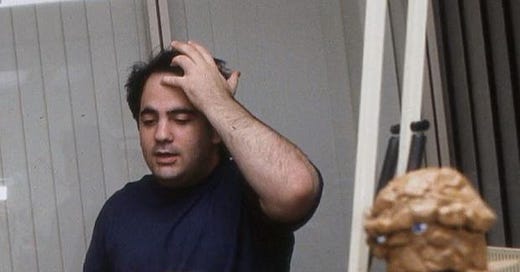



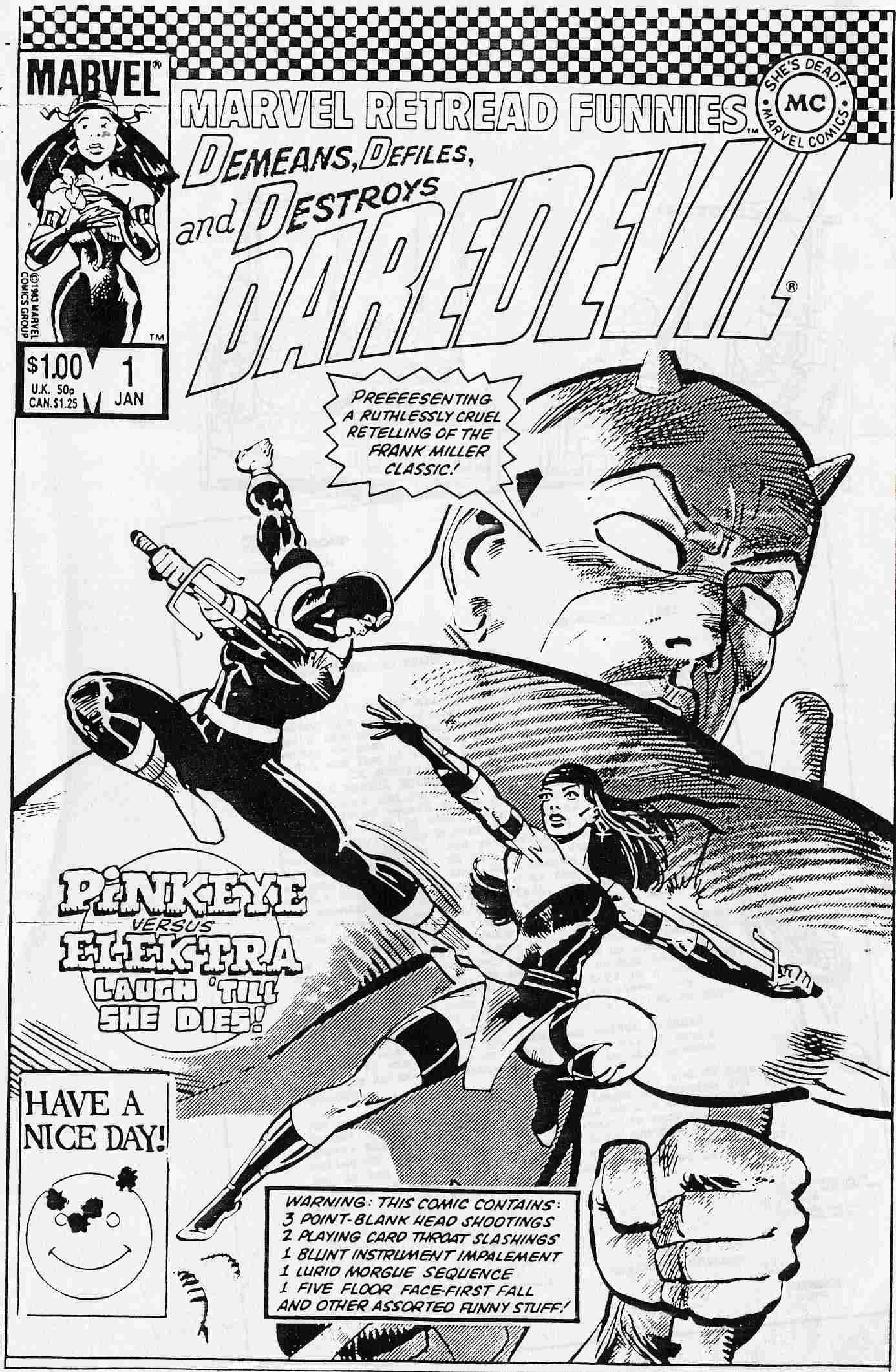


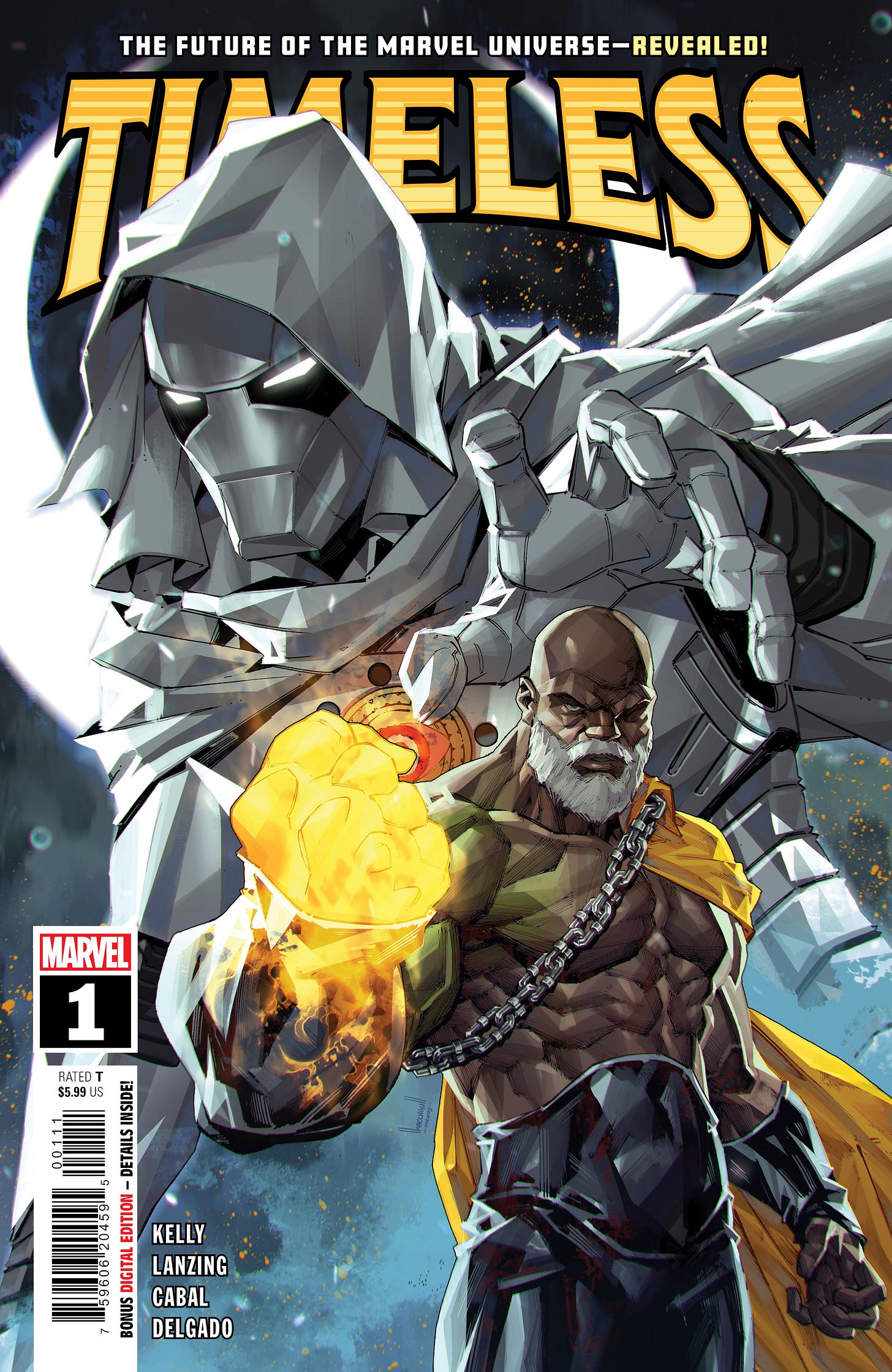
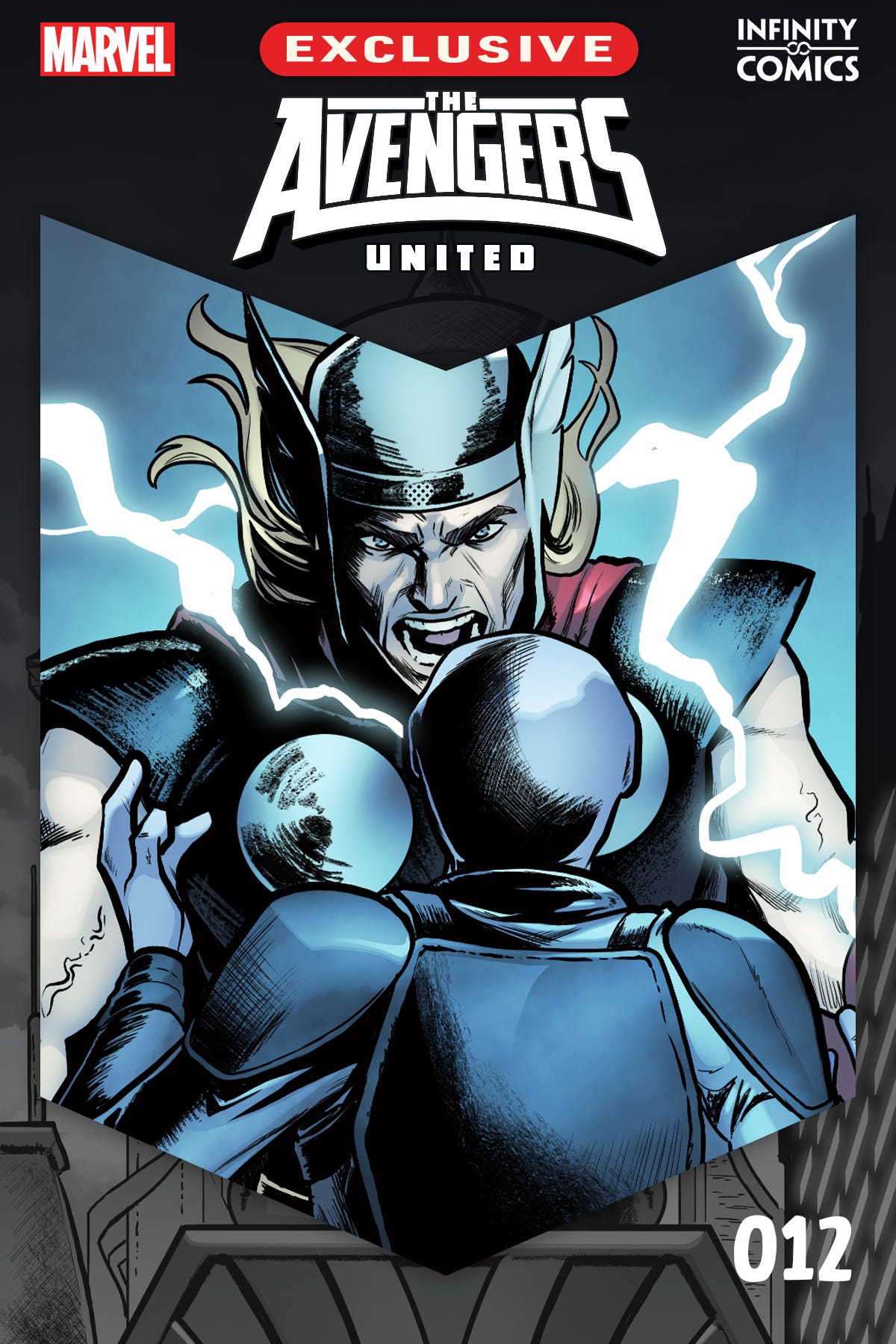

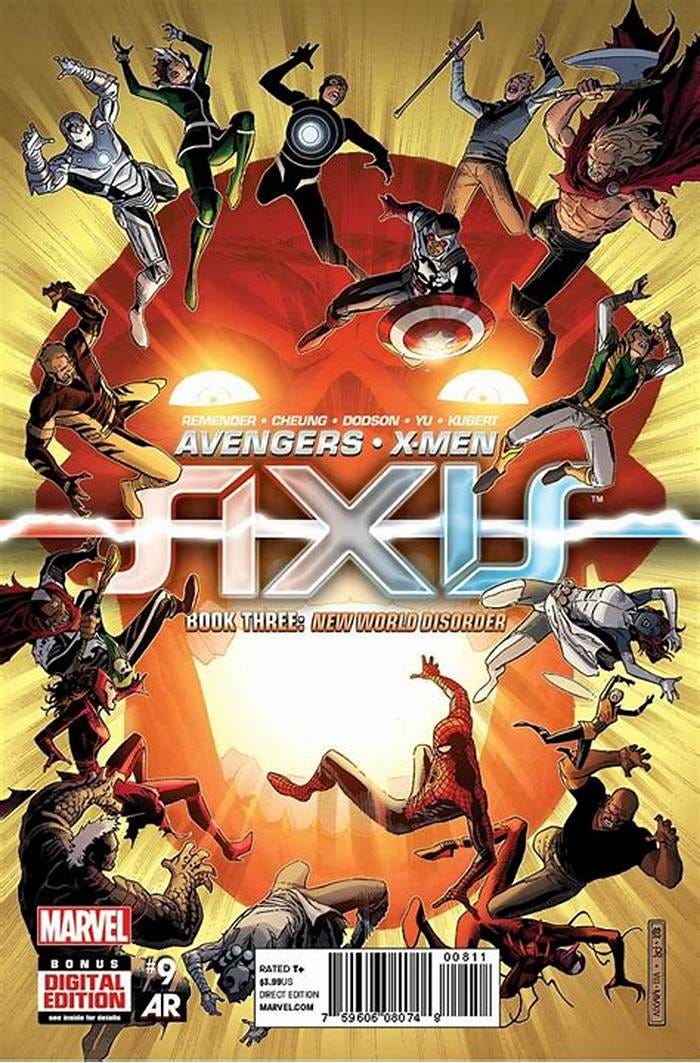
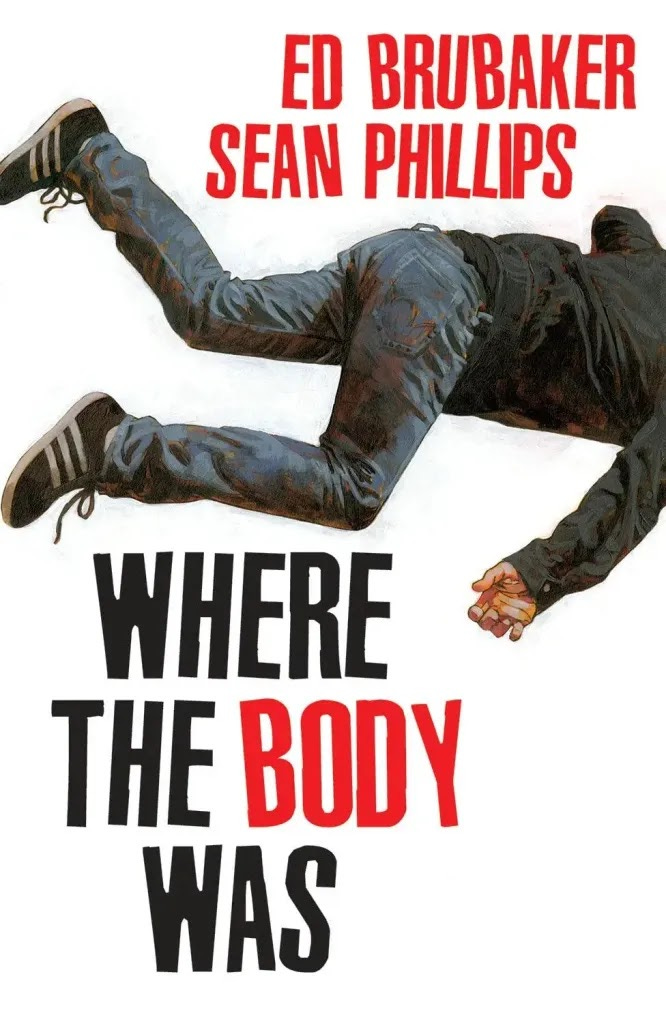
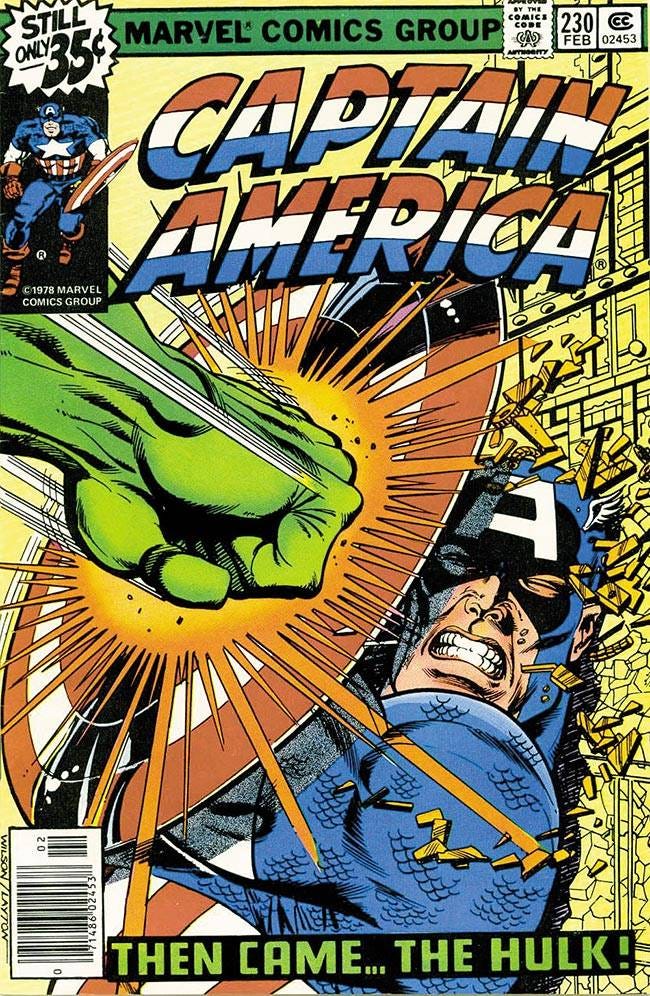
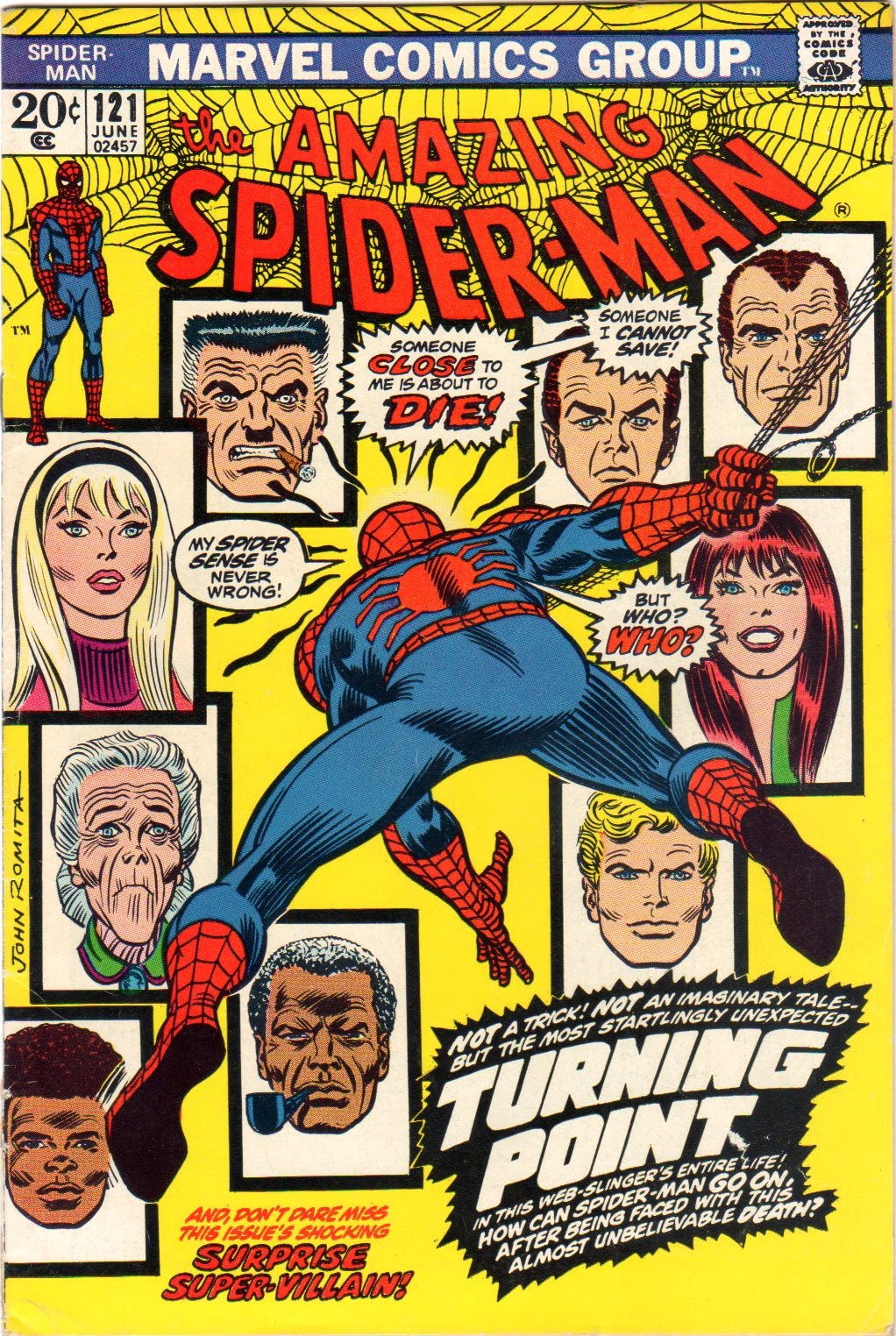
I’ve really enjoyed this newsletter this year, it’s one I most look forward to each week.
What’s funny about the Larry Hama-driven idea to re-dialogue comics like DD 181 — a story I’d never heard before — is that a handful of years back, when IDW was publishing Larry’s GI Joe: A Real American Hero, I half-jokingly suggested we put out a new edition of the old #21 (“Silent Interlude”) issue, only it’d now be fully lettered with Larry’s “newly found” original script, which we’d announce had been lost to time and was the real reason the issue was mistakenly released without dialogue.
He (rightly) declined, not wanting to cheapen the impact of the original issue.
Hi, Tom! I just wanted to say I got those Ms. Marvel comics, and to thank you again for such a generous act. I hope you & yours have a great holiday season!